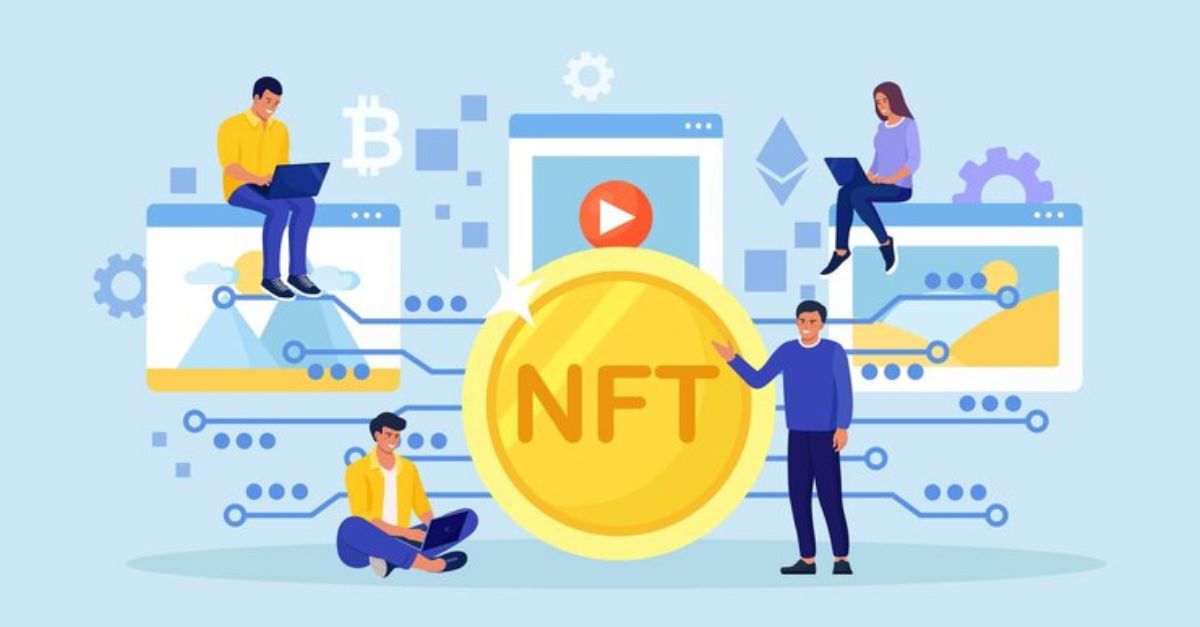
Bridging the Gap Between NFTs and DeFi through Real World Asset Tokenization
In recent years, non-fungible tokens (NFTs) have revolutionized the concept of ownership in the digital era. It provides a unique and verifiable way to represent assets on the blockchain. Simultaneously, the rise of decentralized finance (DeFi) has changed traditional finance services through permissionless and decentralized alternatives.
However, despite the individual success of NFTs and DeFi, integrating both concepts is a challenge. This is where real-world assets (RWAs) comes in. They serve as the bridge connecting both DeFi and NFTs, unlocking multiple financial innovations.
In this blog, we will understand real-world assets (RWAs) and how they play a crucial role in connecting NFTs to DeFi, opening new avenues for businesses to thrive in this digital realm.
Understanding NFTs and DeFi
Non-fungible tokens (NFTs): NFTs, or Non-Fungible Tokens, represent ownership of unique items or content on the blockchain. Each token is distinguishable and irreplaceable, offering provenance and authenticity for digital and real-world assets alike.
Decentralized finance (DeFi): DeFi, short for Decentralized Finance, encompasses financial services built on blockchain technology. Its key features include decentralization, eliminating the need for intermediaries, and providing an array of financial services in a permissionless environment.
Real-world assets (RWAs) as NFTs
Real World Assets (RWAs) transformed into Non-Fungible Tokens represent a groundbreaking synergy, merging the physical and digital realms. Tokenizing tangible, valuable assets like real estate, art, and intellectual property as NFTs enhances liquidity, accessibility, and functionality of the underlying asset.
Each NFT serves as a verifiable digital certificate of such assets, capturing the uniqueness and ownership on the blockchain that is verifiable and open for everyone to evaluate authenticity. This fusion allows fractional ownership, enabling a wider range of investors to participate in traditionally exclusive markets.
Moreover, RWAs as NFTs offer substantial benefits in the decentralized financial ecosystem, like:
- Enhanced Liquidity: RWAs, such as real estate and art, become divisible and tradable through NFTs, unlocking liquidity in traditionally illiquid markets.
- Collateral in DeFi: NFTs backed by RWAs serve as collateral in DeFi platforms, expanding the range of assets available for decentralized lending and borrowing.
- Automated governance: Integrating RWAs as NFTs introduces smart contract-based governance, automating processes like revenue distribution and ensuring transparent management.
- Fractional Ownership: NFTs enable fractional ownership of RWAs, democratizing access to high-value assets and fostering a more inclusive investment landscape.
- Market Efficiency: The synergy between RWAs, NFTs, and DeFi enhances market efficiency by allowing for seamless cross-platform integration and reducing dependence on intermediaries.
RWAs: bridging DeFi and NFTs
Now that we’ve explored the transformative synergy of Real World Assets (RWAs) as Non-Fungible Tokens, it’s imperative to understand how this integration unlocks financial innovation within the decentralized finance landscape. This section delves into the practical applications, emerging trends, and the far-reaching impact of bridging NFTs, RWAs, and DeFi.
RWAs in DeFi lending and borrowing
NFTs backed by RWAs serve as collateral in DeFi lending platforms, enabling users to unlock the inherent value of their real-world assets without liquidating them. This collateralization expands the scope of assets accepted within DeFi lending protocols beyond cryptocurrencies, providing users with a diverse set of options for accessing liquidity.
Additionally, individuals holding NFTs representing real-world assets can leverage these digital tokens to secure loans within decentralized lending platforms. This innovative approach allows users to tap into the value of their tangible assets without the need for traditional banking systems, fostering financial inclusivity and flexibility.
Real World Assets (RWAs) as Non-Fungible Tokens in decentralized finance extends beyond lending and borrowing, opening new avenues for innovation and financial empowerment.
Cross-platform integration and interoperability
Real-world assets tokenized as NFTs serve as a bridge for cross-platform integration within the broader DeFi ecosystem. These NFTs can be seamlessly integrated into various decentralized applications, including lending platforms, decentralized exchanges, and liquidity pools.
The interoperability of NFTs representing RWAs allows users to leverage their assets across different DeFi protocols, unlocking new possibilities for liquidity, trading, and yield generation.
Enhancing financial inclusivity
Real-world assets tokenized as NFTs in the DeFi realm contribute significantly to financial inclusivity. The ability for individuals to participate in decentralized governance, receive dividends through smart contracts, and leverage their tangible assets for borrowing without traditional banking intermediaries empowers a broader spectrum of users.
This inclusivity aligns with the core principles of decentralized finance, providing opportunities for a more diverse range of investors to engage in the financial ecosystem.
Decentralized governance and revenue distribution
Smart contracts embedded within these NFTs automate governance processes, enabling token holders to participate in decision-making regarding the management of real-world assets.
Additionally, smart contracts’ transparent and programmable nature facilitates automated revenue distribution. Investors holding NFTs tied to revenue-generating assets can receive dividends directly through these contracts, reducing the need for intermediaries
Ensuring transparency and security
The transparent and programmable nature of smart contracts ensures that every governance decision and revenue distribution event is recorded on the blockchain, fostering a high level of transparency. This transparency, coupled with the security features of blockchain technology, mitigates the risk of fraud and manipulation. Participants can confidently engage in decentralized governance and financial transactions, knowing the system operates on a tamper-resistant foundation.
Ending Note
The symbiotic relationship between Real World Assets (RWAs), Non-Fungible Tokens (NFTs), and Decentralized Finance (DeFi) is reshaping the financial landscape. RWAs serve as the critical bridge that seamlessly connects the tangible world to the digital frontier, unlocking unparalleled opportunities for innovation within DeFi.
As businesses navigate this transformative intersection, understanding how to leverage the power of RWAs becomes paramount. Embracing decentralized governance, automated revenue distribution, and the inclusivity offered by tokenized assets positions businesses at the forefront of a dynamic financial paradigm.
For businesses seeking to navigate this intricate landscape, BlokMiners stands as a beacon of expertise, empowering businesses to seamlessly integrate their assets into the DeFi realm. From conceptualization to implementation, BlokMiners guides businesses in realizing the full potential of RWAs within NFTs and DeFi. Talk to us today.


